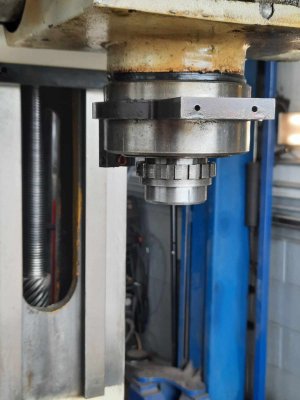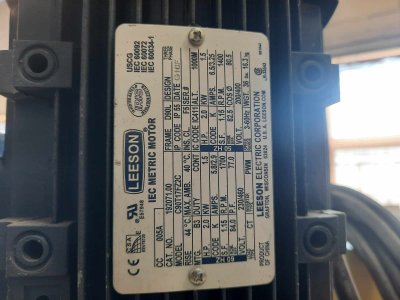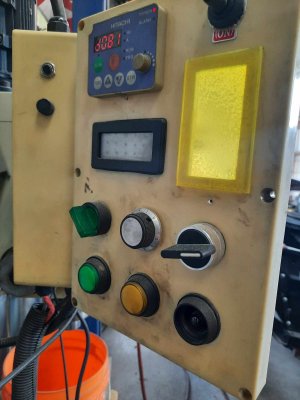MecGen
Member
Hello people.
I just purchased my first mill, PM-45M. It's going to take some work to put it in shape. This mill will have a complete service this winter but I thought I would look for some parts right away.
The machine has a VFS and a RPM display, but the RPM sensor is gone - suspected crash. I have found a ton of "kits" that work with a magnet (have one on my lathe) but this differs as it uses a steel reluctor (teeth) and the sensor is very small. There is no magnet in the reluctor, and it looks to have been a very small sensor as the sensor holder has a 8x1.0mm threaded hole, that had a reducer or a bushing to hold the sensor. 12 volt.
Does anyone know of a part number, or even the proper terminology for the sensor - Hall effect, pnp, npn, etc... ? I found a ton of larger sensors that seem like they can work but they are too large, 3/8 thread, and I am sure they are not ment for small reluctant teeth - leading edge is too close to the trailing edge. I looked at the PM site and they make no mention of a sensor, and I am sure this is an add on.
Any help will be appreciated, Cheers
I did not take a pic in the right angle to see how the sensor is mounted, sorry.
I just purchased my first mill, PM-45M. It's going to take some work to put it in shape. This mill will have a complete service this winter but I thought I would look for some parts right away.
The machine has a VFS and a RPM display, but the RPM sensor is gone - suspected crash. I have found a ton of "kits" that work with a magnet (have one on my lathe) but this differs as it uses a steel reluctor (teeth) and the sensor is very small. There is no magnet in the reluctor, and it looks to have been a very small sensor as the sensor holder has a 8x1.0mm threaded hole, that had a reducer or a bushing to hold the sensor. 12 volt.
Does anyone know of a part number, or even the proper terminology for the sensor - Hall effect, pnp, npn, etc... ? I found a ton of larger sensors that seem like they can work but they are too large, 3/8 thread, and I am sure they are not ment for small reluctant teeth - leading edge is too close to the trailing edge. I looked at the PM site and they make no mention of a sensor, and I am sure this is an add on.
Any help will be appreciated, Cheers
I did not take a pic in the right angle to see how the sensor is mounted, sorry.






